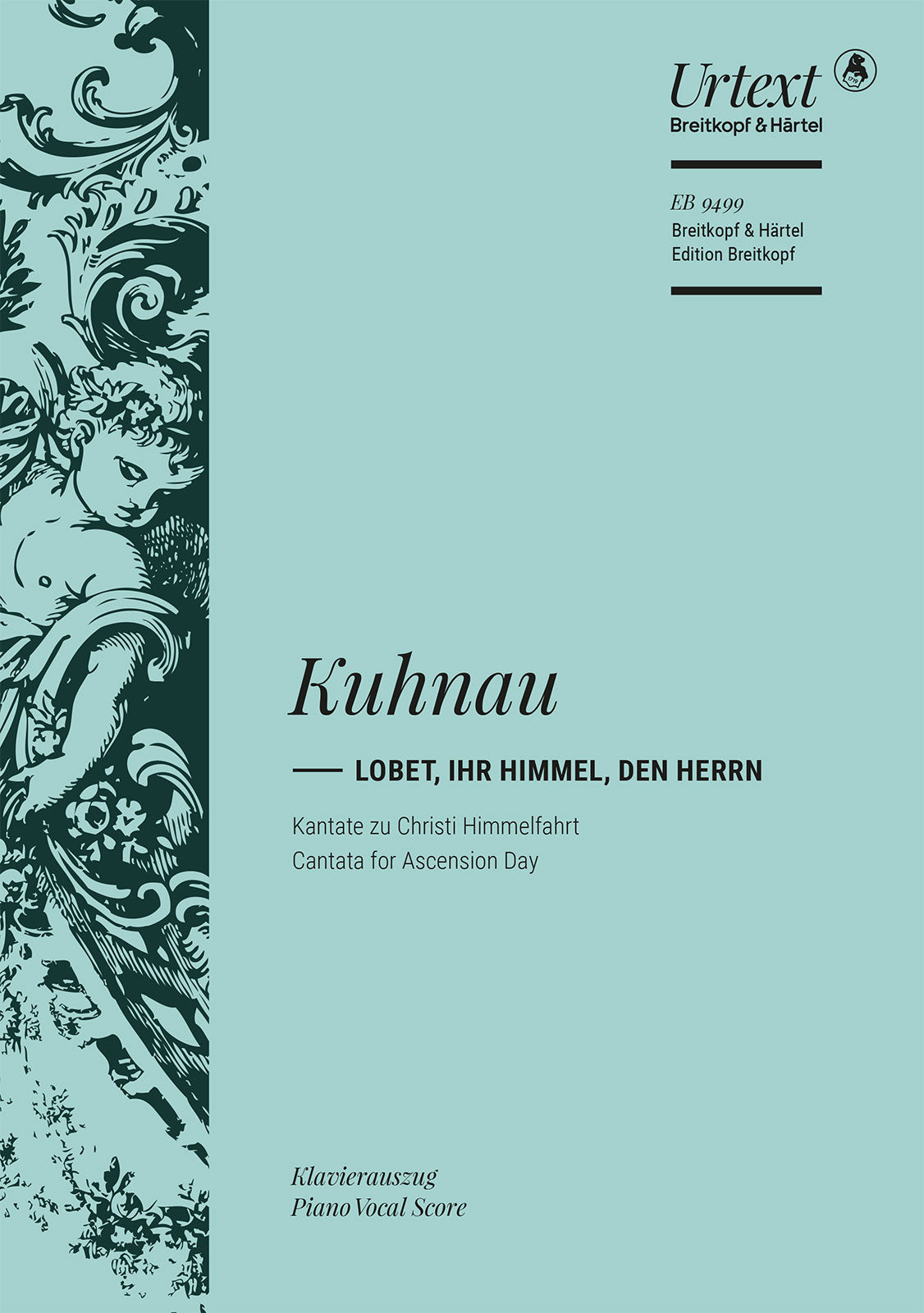Kuhnau: Lobet, ihr Himmel, den Herrn
Cantata for Ascension Day
In stock and typically ships within 1 business day.
- Composer: Johann Kuhnau (1660-1722)
- Instrumentation (this edition): Piano Reduction, SATB Choir
- Originally for: SATB Choir, Orchestra
- Work: Lobet, ihr Himmel, den Herrn (Cantata for Ascension Day)
- Work Language: German
- ISMN:
- Size: 7.5 x 10.6 inches
- Urtext / Critical Edition
Description
The cantata Lobet, ihr Himmel, den Herrn was written for Ascension Day. A specific date of composition has not survived, but due to the more modern scoring of the strings with only one viola and the four-part vocal writing, it can be assumed that it is a comparatively late composition by Kuhnau. It is also the only surviving cantata with an internal sinfonia and has clear oratorio-like characteristics. This seems to be a kind of "Ascension Oratorio" by Johann Kuhnau, which has some parallels to Johann Sebastian Bach's Ascension Oratorio BWV 11. It could even indicate a Leipzig performance tradition similar to that of the Magnificat (PB/OB 32108).
After a festive hymn of praise at the beginning, a short dramatic action begins: The tenor soloist acts as the evangelist and a choral movement describes the "Ascension" accompanied by timpani and trumpets. This is followed by the much longer section of the interpretation, in which the bass soloist as a kind of "believing soul" and the choir as the congregation encourage each other to take up the fight against the enemies. This is depicted in the aforementioned victoriously festive sinfonia, whereupon the "believing soul", supported by an internalized soprano aria, can now also ascend to heaven. The finale is a chorale on the third verse of "Herzlich lieb hab ich dich, o Herr", which brings the scene to a redemptive conclusion.
Publishers use a lot of words to describe what they sell, and we know it can be confusing. We've tried to be as clear as possible to make sure you get exactly what you are looking for. Below are descriptions of the terms that we use to describe the various formats that music often comes in.
Choral Score
A score for vocalists that only contains the vocal lines. The instrumental parts are not there for reference. Generally, cheaper than a vocal score and requires multiple copies for purchase.
Facsimile
Reproductions of the original hand-written scores from the composer.
Full Score
For ensemble music, this indicates that the edition contains all parts on a single system (there are not separate parts for each player). In larger ensembles, this is for the conductor.
Hardcover
Hardbound. Generally either linen-covered or half-leather.
Orchestral Parts
Similar to a wind set, this is a collection of parts. In the case of strings, the numbers listed are the number of copies included, though generally these are available individually (often with minimum quantities required).
Paperback
When publishers offer multiple bindings (e.g. hardcover) or study scores, this is the "standard" version. If you're planning to play the music, this is probably what you want.
Performance / Playing Score
A score of the music containing all parts on one system, intended for players to share. There are not separate parts for each player.
Set of Parts
For ensemble music, this indicates that there are separate individual parts for each player.
Solo Part with Piano Reduction
For solo pieces with orchestra, this is a version that contains a piano reduction of the orchestra parts. For piano pieces, two copies are typically needed for performance.
Study Score
A small (think choral size) copy of the complete score meant for studying, and not playing. They make great add-ons when learning concertos and small chamber works.
Vocal Score
A score prepared for vocalists that includes the piano/organ part or a reduction of the instrumental parts.
Wind Set
For orchestral music, this is a collection of wind and percussion parts. The specific quantities of each instrument are notated.
With Audio
In addition to the printed music, the edition contains recordings of the pieces. This may be an included CD, or access to files on the internet.
With / Without Fingering (Markings)
Some publishers prepare two copies - a pure Urtext edition that includes no fingering (or bowing) suggestions and a lightly edited version that includes a minimal number of editorial markings.









